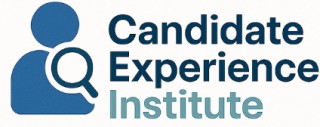Defining the Role of a New Hire
Clarifying the Purpose of a Newly Hired Employee
Understanding the essence of a new hire is crucial for both employers and recent hires. The transition from candidate to employee marks the beginning of an intricate process that involves multiple facets, including the onboarding journey and acclimation to company culture. The term "new hire" generally refers to an individual who has recently been employed by a company and is undergoing the integration process into their new role. Every newly hired employee plays a vital role in the organization, contributing fresh perspectives and skills that foster the overall growth and success of the company. During the initial stages, it is essential for the employer to define the role clearly. This involves outlining responsibilities, expected outcomes, and the alignment with the company’s strategic goals. The main aim is to ensure that the hiring process and ensuing onboarding experience align with the new hire's expectations and skill set. Effective communication is key in this stage to avoid any misalignment that might arise. This lays the groundwork for seamless integration into the company, ensuring that new employees feel welcomed and valued from day one. In most cases, the state or national guidelines might require employers to report new hires through a national directory or hire report. This is crucial for compliance with federal laws pertaining to employment, including social security, health insurance, and sometimes child support arrangements. Additionally, these hire reporting requirements help in tracking employment trends and contribute to broader economic analyses. For a seamless transition from candidate to employee, organizations need to invest in a well-structured onboarding process. This marks the initial step towards a fulfilling and engaging employee experience. Organizations benefit greatly by cultivating a supportive onboarding environment that prioritizes employee engagement and foster successful integration. To explore more on navigating the complexities inherent in managing newly hired individuals, visit Navigating Complex Employee Types. This resource provides valuable insights into handling diverse hiring scenarios effectively.The Journey from Candidate to New Hire
Transitioning Candidates into Valuable Team Members
The journey from candidate to valuable team member is a meticulously orchestrated dance, where every step holds significance. Understanding this transition is crucial for any company aiming to harness the full potential of its new hires. The process is not solely about ticking boxes, but about embedding the candidate into the company's ecosystem. Firstly, it begins with an impactful and organized hiring process. Employers must clearly define the role and expectations, ensuring the candidate feels welcomed even before their employment officially begins. Pre boarding activities are vital for setting the stage and easing their transition into employed status, reducing the anxiety often accompanying new job roles. Once hired, the newly hired individual enters a delicate phase of adjustment. During this time, they must adapt to new reporting structures, develop familiarity with the company's policies, and integrate into any bargaining units or teams they will be part of. The employment landscape continually evolves, necessitating flexible onboarding strategies to ensure hired employees understand and meet the employer's expectations. Federal law mandates specific reporting protocols, such as hire reporting, to entities like the national directory, ensuring compliance with regulations including child support enforcement. Employers must be diligent, ensuring all necessary state and federal hire reports are accurately submitted within the stipulated consecutive days. Moreover, social security, health insurance, and other benefits need to be effectively communicated during the onboarding process. Such practices enhance employee engagement, setting a solid foundation for a rewarding employment journey. In conclusion, the seamless transition of a candidate to a fully integrated employee demands an artful balance of procedural diligence and personal touch. Employing effective strategies not only retains talent but transforms them into integral parts of the company fabric. For those looking at enhancing this crucial phase, exploring effective strategies to retain employees can provide invaluable insights.Onboarding: The Critical First Steps
Initiating the Onboarding Experience
The initial phase of the onboarding experience is one of the most critical elements in transitioning a newly hired employee from candidate to an integral part of the company’s workforce. The onboarding process begins even before the employee’s first day, often referred to as pre boarding. During this period, employers must ensure that all the necessary paperwork, including social security and health insurance documentation, is completed. This step is vital as it sets the foundation for compliance with federal law and helps newly hired employees acclimate to the company's administrative requirements.
Once the hired employee starts their job, the onboarding process provides structured guidance to facilitate a smooth transition into their role. An effective employee onboarding program covers a range of topics—from understanding job-specific duties to integrating into the broader company culture. This journey is essential for fostering employee engagement and ensuring that new hires feel part of the team from day one.
For the employer, setting up clear hire reporting and onboarding procedures can yield significant benefits. Not only does it ease the transition for new hires, but it also minimizes the time required for them to become productive members of the team. According to a hire report, effective onboarding can significantly improve job satisfaction and organizational commitment, which in turn can result in better retention rates.
Moreover, companies should not overlook the importance of reporting hires to their respective state. This requirement, often mandated for purposes such as child support enforcement, is critical to ensuring compliance with state laws. Additionally, reporting new hires to the national directory ensures that all parties, including the employee, employer, and any relevant bargaining unit, have clear records of employment status and associated benefits.
Ultimately, the first few consecutive days of employment are pivotal. The success of the onboarding experience can have long-lasting effects on an employee’s experience with the company. Employers who invest time and resources into crafting personalized and comprehensive onboarding programs see benefits not only for the employed employer and newly hired individuals but also in the overall state of the organization. For further insights into optimizing your onboarding processes, explore our article on how talent acquisition news outlets shape candidate experience.
Challenges Faced by New Hires
Overcoming Obstacles in the Onboarding Journey
Navigating the transition from candidate to an engaged, productive employee can present several challenges. It is crucial for employers to acknowledge and address these hurdles to ensure a seamless onboarding experience. Every new hire's journey is unique, yet there are common obstacles that many face.- Understanding the Role: Newly hired employees often struggle with grasping the nuances of their new job. Clear expectations and comprehensive job descriptions are vital. Employers should provide detailed insights into specific duties and the overall scope of the role.
- Integration into Company Culture: Adjusting to the company culture can also be daunting for new hires. Whether it's decoding unwritten office norms or adapting to the company's values, feeling a sense of belonging takes time. Employers should facilitate this process by offering mentorship and actively promoting inclusivity.
- Navigating Administrative Processes: New employees must often juggle numerous administrative tasks, from setting up health insurance and social security details to understanding company policies linked to employment. Simplifying these processes and offering guidance can significantly ease the burden on recently hired individuals.
- Communication Gaps: Clear and effective communication is essential during the onboarding process. Addressing potential language barriers and ensuring hires feel comfortable asking questions can mitigate misunderstandings and enhance employee engagement.
- Balancing Productivity and Learning: Striking a balance between fulfilling job responsibilities and acquiring new skills can be tricky for new employees. Employers should encourage open dialogue to report challenges and offer support through training programs or check-ins.
The Impact of Company Culture on New Hires
How the Work Environment Shapes New Hires
The company culture is an intricate tapestry that significantly impacts new hires. From the moment the onboarding process begins, it is the cultural signals and norms that shape an employee's perception and adaptation to their new workplace. A company that emphasizes employee engagement and a supportive work culture will likely win the trust and commitment of its employees. This involves not only understanding the role they are stepping into but also the expectations set by the employer and peers. The onboarding experience becomes pivotal in this aspect, providing a platform where new hires are introduced to the values and social interactions that define the employment environment. Research states that a positive work culture fosters better job satisfaction, increased morale, and lower turnover rates. Newly hired employees who start with a clear understanding of their job responsibilities, supported by a cooperative team, feel more integrated within the company. Impact on Organizational Reporting and Growth Newly hired individuals often bring fresh perspectives, and their psychological comfort within the workplace can dictate how freely they share these insights. Employers, therefore, benefit from maintaining a culture that not only welcomes new ideas but also strategically includes them in hire reports. Consistently effective new hire reporting indicates a well-oiled hiring and employee onboarding process, strengthening overall company performance. Implementing pre boarding initiatives as part of the onboarding process ensures that new hires begin feeling like part of the team even before their official employment start date. The company should clearly communicate details regarding welfare benefits such as health insurance and child support, where applicable, in compliance with federal law and state directives. Beyond communication, the organizational culture should accommodate varying employment needs, addressing those within a bargaining unit and the larger employee community. This approach not only aligns with federal reporting requirements through the national directory of new hires, but it also reinforces the stability and contentment of newly hired employees, eventually enhancing their tenure and contributions to the company’s overall objectives.Measuring Success in the New Hire Experience
Evaluating the Success of the New Hire Journey
In today's dynamic work environment, understanding how well a new hire integrates into your organization is crucial for sustainable success. Measuring the effectiveness of the new hire experience can help employers pinpoint areas that need improvement and ultimately lead to higher employee retention.
During the onboarding process, it is essential to regularly monitor the progress of newly hired employees. Employers should be attentive to feedback regarding the employee onboarding experience, as it offers invaluable insights into areas such as role clarity, engagement, and satisfaction within the initial days of employment.
- Employee Engagement Surveys: Conducting surveys within the first few weeks can provide employers with critical feedback on the impact of their onboarding program. It is essential to ensure these surveys are structured to gather data on the onboarding experience, including whether the hired employee feels adequately prepared for their job responsibilities.
- Performance Metrics: Assessing new hire performance through established metrics helps identify how effectively an employee meets initial job expectations. Comparing these results to the expected outcomes reports a clear state of performance compared to standards.
- Retention Rates and Turnover: Low turnover rates among hires indicate a successful onboarding process. Employees who remain with the company for consecutive days demonstrate better adaptation to the work culture and responsibilities.
By cultivating a positive workplace environment, employers create a welcoming atmosphere that fosters active engagement and productivity among hires. Whether it involves federal law compliance for reporting hires or periodical hiring assessments, keeping consistent documentation throughout the onboarding process assists in creating robust employment strategies.
In summary, the evaluation not only helps assess new hire integration but also strengthens the overall hiring strategy. Employers should focus on refining their hire reporting and onboarding methods based on analytical results for continued progress in employment practices.










